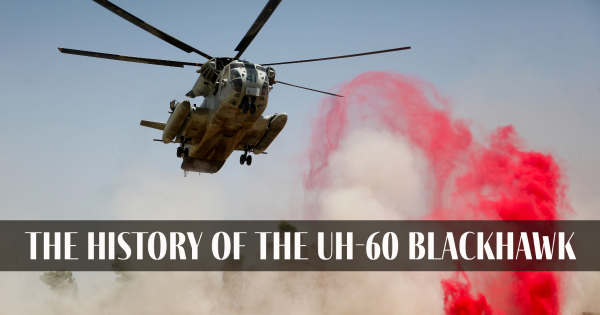Unlocking Peak Performance: UH 60 Helicopter Maintenance Guide
Comprehending the Mechanics and Engineering Behind Uh 60 Helicopters
The UH-60 helicopter, typically understood as the Black Hawk, stands as a peak of contemporary rotorcraft technology, symbolizing a mix of durable design and intricate technicians. As we peel off back the layers of the UH-60's layout, a world of detailed systems and precise design comes to light.
History of UH-60 Helicopters
The history of UH-60 helicopters traces back to the late 1970s when the USA Army looked for a advanced and flexible energy helicopter to change its aging fleet. In feedback to this demand, the Sikorsky Airplane Corporation created the UH-60 Black Hawk helicopter. Presented in 1979, the UH-60 swiftly ended up being a staple in armed forces procedures because of its impressive capabilities.
The UH-60 was created to master a variety of goals, including army transportation, medical discharge, electronic warfare, and unique procedures. Its ability to adapt to different duties made it a valuable possession to the U.S. uh 60. Military and various other army pressures around the world
Throughout the years, the UH-60 platform has actually undertaken several upgrades and variations to improve its efficiency and maintain speed with developing mission demands. These helicopters have actually seen considerable service in conflicts such as the Gulf Battle, Afghanistan, and Iraq, showcasing their dependability and flexibility in diverse functional environments. The UH-60's rich history is a testament to its enduring tradition as a leading energy helicopter.

Engine and Power Equipments
Using cutting-edge propulsion technology, UH-60 helicopters are outfitted with innovative engine and power systems to guarantee optimal efficiency and integrity in a variety of functional scenarios. The UH-60, frequently called the Black Hawk, is powered by 2 General Electric T700-GE-701D engines, each with the ability of delivering up to 1,940 shaft horse power. These turboshaft engines provide the needed thrust for the helicopter to execute its goals properly, consisting of troop transport, clinical emptying, and combat assistance.

Rotor System and Aerodynamics
How do the rotor system and the rules of aerodynamics of UH-60 helicopters add to their operational effectiveness and flight abilities? The blades system of the UH-60 helicopter plays a critical duty in giving lift and propulsion.
The rules of aerodynamics additionally play a key role in the performance of UH-60 helicopters. The structured fuselage and blades blade style lower drag, enabling the helicopter to achieve greater rates and far better gas performance. The aerodynamic layout of the UH-60 additionally adds to its capability to operate important link in diverse ecological problems, consisting of hot temperature levels and high elevations.
Avionics and Flight Control Equipment

In its intricate control with the rotor system and the rules of aerodynamics of UH-60 helicopters, the avionics and trip control systems create a vital network of modern technologies shaping the airplane's operational abilities. Avionics incorporate the digital systems utilized for communication, navigation, and keeping an eye on different airplane features. In the UH-60, these systems consist of electronic displays, interaction radios, general practitioner navigation, weather condition radar, and auto-pilot systems. These avionics systems offer crucial details to the pilots, enhancing situational understanding and guaranteeing risk-free and reliable operation of the helicopter.
The trip control systems of the UH-60 are responsible for translating the pilot's inputs into the ideal adjustments to the rotor system, guaranteeing stable trip and maneuverability. These systems contain hydraulic actuators, servos, and computer systems that collaborate to control the tail and major blades, along with other trip control surface areas. By precisely taking care of the helicopter's flight characteristics, these systems make it possible for pilots to Resources carry out a vast array of missions, from transport and search-and-rescue to fight procedures, with accuracy and self-confidence.
Duty and Applications in Aviation
Avionics systems in UH-60 helicopters encompass an array of digital systems that aid in navigation, interaction, surveillance, and regulating numerous airplane functions. These systems consist of electronic display screens, autopilot systems, communication radios, GPS navigation equipment, and weather condition radar. In addition, these systems incorporate safety and security functions such as auto-pilot settings, terrain understanding alerting systems, and security augmentation systems to enhance the overall safety and operational capabilities of the UH-60 helicopters in numerous missions, including army transportation, medical evacuation, search and rescue, and aerial firefighting.
Conclusion
Finally, the UH-60 helicopter is a functional aircraft with a rich background and advanced engineering. Its engine and power systems, blades system, aerodynamics, avionics, and trip control systems all interact to make it a trustworthy and efficient device. The UH-60's role and applications in aeronautics are large, varying from armed forces operations to search and save objectives. Its continued learn this here now growth and use show its value in the area of aviation (uh 60).
In its intricate coordination with the rotor system and the rules of aerodynamics of UH-60 helicopters, the avionics and flight control systems create a vital network of modern technologies shaping the airplane's functional capabilities.The trip control systems of the UH-60 are accountable for translating the pilot's inputs into the proper adjustments to the rotor system, ensuring stable flight and maneuverability. Avionics systems in UH-60 helicopters encompass a range of digital systems that aid in navigation, communication, monitoring, and regulating different airplane features. In addition, these systems integrate safety and security attributes such as auto-pilot settings, surface understanding cautioning systems, and stability enhancement systems to enhance the overall safety and security and operational abilities of the UH-60 helicopters in numerous objectives, consisting of army transport, clinical emptying, search and rescue, and airborne firefighting.
Its engine and power systems, rotor system, aerodynamics, avionics, and trip control systems all function together to make it a trusted and effective equipment.